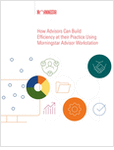Charles Schwab chief investment strategist Liz Ann Sonders had some encouraging words for scared investors, telling a financial advisor audience Tuesday at ETF.com‘s InsideETFs conference: “I personally think the bull market we’re in now will be the best we see in our lifetimes.”
The optimistic economic stance is not new for the Schwab economist, who has been consistently bullish in her frequent public appearances, but coming off a few days of rough market reversals, particularly in emerging markets, her superlative use of the word “best” underscored her high degree of confidence.
Sonders was careful to note that that what economists term a “secular bull market” does not exclude the possibility of market corrections. In fact, she noted that the stock market crash of 1987 came within the greatest bull market in history.
What’s more, Sonders said strong stock market years like 2013 tend to be followed by subsequent strong years, and the fact that we have had five consecutive years with positive market returns did not dampen her outlook for 2014.
That is because of both positive macroeconomic and microeconomic trends. Foremost among the former has been a long-developing but far from played out renaissance in U.S. manufacturing and energy production.
Two months ago, the U.S. actually produced more oil than it imported — a milestone — but Sonders has been following the trend since her first visit to mainland China in 2007, when two U.S. CEOs advised her to pay attention to what they foresaw as a “reshoring” trend within the decade.
Those CEOs foresaw, and Sonders brought data to support, that it would become uneconomical to remain in China and other emerging markets as well for a variety of reasons including restrained U.S. labor costs, rising emerging market labor costs, and abundant energy and low natural gas prices in the U.S.
In addition to the narrowing of the cost gap, the advantages that the U.S. has always had, such as a strong rule of law, superior infrastructure, labor market stability and advanced technology, are further draws for manufacturers restoring operations back to the U.S.
Sonders cited a key measure called landed cost gap; she cited studies by the Boston Consulting Group showing that once that measure reaches a level of around 15% to 17%, the economics of reshoring become positive. The U.S. is now at 16%; consequently, Sonders is optimistic about a resurgence in U.S. industrial activity.
And since U.S. manufacturing plants are out of date and badly in need of upgrading, she foresees a burst of private business spending that will further contribute to an expansion of U.S. GDP in the years ahead.








 January 28, 2014 at 05:59 AM
January 28, 2014 at 05:59 AM










